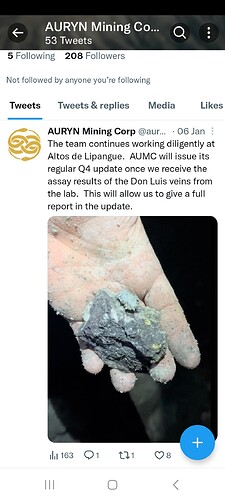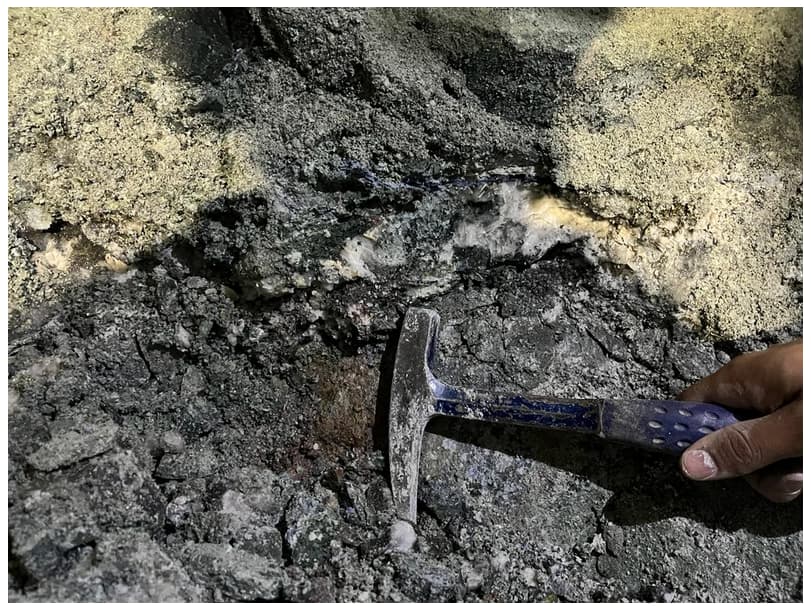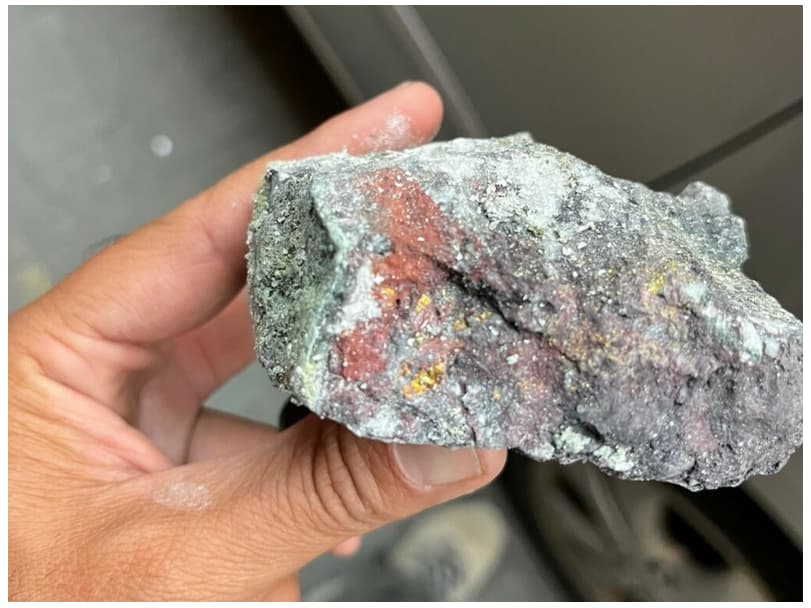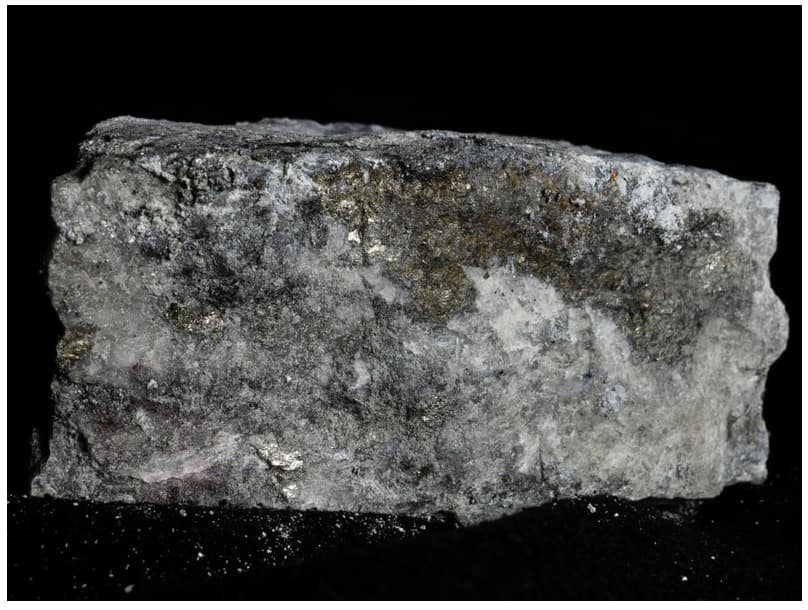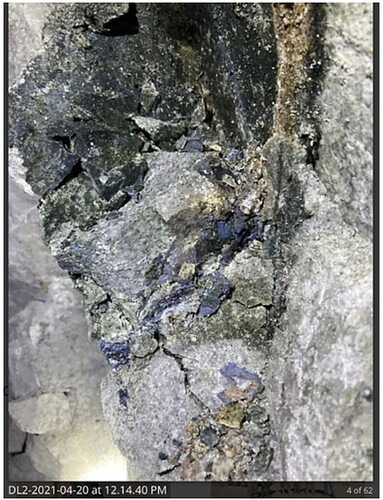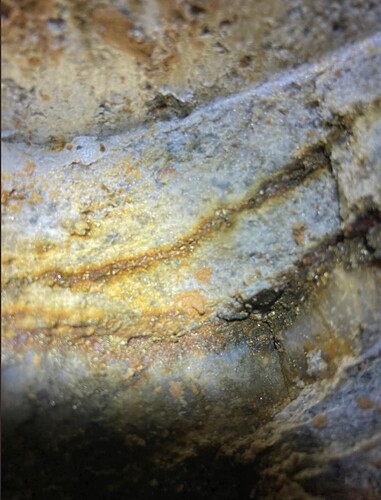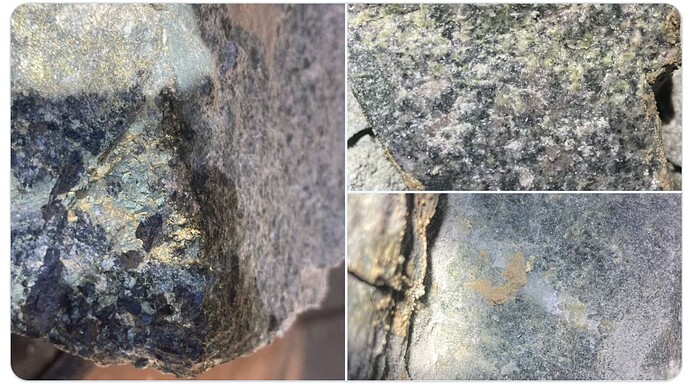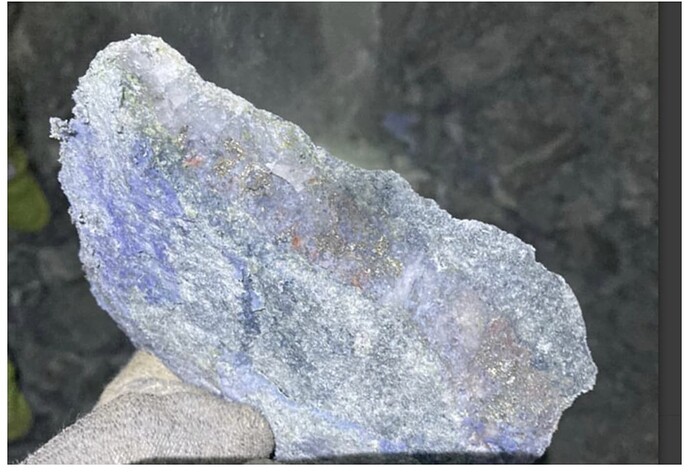Hi JimmyP,
Thanx for reposting that picture from Auryn twitter in a format that we could enlarge and see a lot greater detail than the twitter version showed. It’s on post # 42 (currently of 57) on the Q-1 of 2023 TMP forum. If you hit the blue “+” sign twice you’ll get a nice magnified image. I didn’t feel comfortable in commenting on that twitter version of that photograph but now that I can magnify it quite a bit, I think there’s some information that might be helpful.
I’m at a bit of an impasse here because I know what the evidence says as to what range of grades to expect in these upcoming samples. Everything in the medical world is now “evidence-based”. I don’t know why geology would be any different. The problem for me is that the “over-under” for these upcoming assays is so much higher than the worldwide average gold grade being mined that I thought, in the past, that I’d better zip it until the official numbers come out. Recently, Kevin made the comment that the rock in this tweet “says it all”. The question then becomes, what is this rock sample, and many dozens of others in the Auryn website gallery, trying to “say”?
I hate to go Geo-dork on you guys but there is some very compelling evidence in this photograph. I’m always rambling on about two types of very favorable zones that can occur in hydrothermal mineral deposits. The first is a SUPERGENE ENRICHMENT ZONE or SGE zone. What happens here is that “pyrite” (iron sulfide) gets oxidized near surface by the oxygen dissolved in meteoric/rain water and this makes the environment acidic. The acids convert metal “sulfides” into “sulfates”. Sulfates are very soluble and they’ll get dissolved in the surrounding fluids and drop downwards through the various rock strata until they hit the historical water table. Here, especially the copper sulfates, pile up and get converted into copper minerals with VERY HIGH COPPER CONCENTRATIONS. These include that bluish bornite we’ve been witnessing, plus covellite and chalcocite which is 80% pure copper.
If a deposit is fortunate enough to have SUPERGENE ENRICHMENT, these zones can be vertically very extensive and can go for several hundred meters. In a 91-million-year-old deposit like this one, the “historical water table” would have been all over the map at various levels through droughts and floods. A couple of weeks ago, I cited a study by a couple of Geo-professors from Illinois that was featured in ECONOMIC GEOLOGY. They concluded that when “bornite” is present, the concentrations of gold in these SGE zones can be almost twice its usual concentration. High-grade gold loves to hang out with bornite. These SGE zones are most famous for hyper-concentrating copper but they also hyper-concentrate gold.
In the photo, you can see the shiny yellow stuff amidst all of that what appears to be bluish-colored bornite. Technically, the shiny yellow stuff could be gold, pyrite or chalcopyrite which can all present similarly. There are actually 2 types of “fool’s gold”. They are pyrite and chalcopyrite. “Chalco-“ refers to copper. Chalcopyrite (36% copper) is the most common form of copper ore mined worldwide. Gold happens to also love to hang out with pyrite. In a sense, anything yellowish with a metallic lustre hanging out with bornite is a very good thing. If you’ve studied enough ore samples, pyrite is really pretty easy to distinguish from gold. It’s much harder than gold and it’s shinier than gold because of its cubic crystals. When you tilt a sample of pyrite and the light hits it at just the right angle you about get blinded. Gold just exudes a consistent but boring yellow without too much flash no matter how you tilt the sample and very little crystalline structure will show. If you stab gold with your pocket knife, it will dent in. Both pyrite and chalcopyrite will break off and crumble.
The other “zone” of importance in some but not all gold deposits is the “boiling zone”. Gold travels in a dissolved form, with sulfur in magmatic/hydrothermal fluids at insanely hot temperatures. These fluids/gases are so hot that they actually need to cool in order to boil. Boiling provides enough energy to sever the bond between the sulfur and the gold which allows the gold to precipitate out as a solid and get deposited locally often IN VERY HIGH CONCENTRATIONS.
Gold also likes to hang out with quartz, which is silicon dioxide. The quartz travels in a dissolved state also. In areas of rapid cooling (boiling zones) the quartz cools so fast that it doesn’t have time to form nice crystals. This type of quartz is known as “chalcedonic quartz”, “milk quartz”, “cryptocrystalline quartz” or “aphanitic quartz”. You can see this stuff all over that sample JimmyP posted. Notice how the milk quartz hangs pretty close to the shiny yellow stuff.
No promises, but we could have the best of both worlds and have both an SGE zone and an overlapping “boiling zone”. We might have both a “bornite effect” and a “boiling zone” effect acting simultaneously to hyper-concentrate the gold. If we do have high concentrations of BOTH gold and copper in these upcoming samples, then this phenomenon might extend downwards for a significant distance because of the vertical widths of these zones. Fingers crossed. For me, this picture screams out, “stay tuned for not just what’s going on at this level in the vein structure but also WHAT IS GOING ON UNDERNEATH IT FOR PERHAPS QUITE AN EXTENT. The presence of bornite, milk quartz and shiny yellow stuff all in one area is pretty compelling.
The other thing you need to keep in mind is that the DL1 Vein is a MESOTHERMAL VEIN. It is vertically very extensive. These “zones” are going to tend to be a little more extensive vertically than they would otherwise be in simple epithermal veins.
The point should be made that management, no doubt, already knows what that shiny yellow stuff is. The miners will have a “PIMA” on site (Portable Infra-red Mineral Analyzer). This is an infra-red gun that you aim at a sample and it will tell you what metal is being aimed at. The miners will also have a piece of unglazed porcelain on them as well as a pocket knife. When you scratch a shiny yellow metallic sample against unglazed porcelain, the metal will leave a line on the porcelain known as its “streak”. These are very diagnostic of which metal is present. Gold has a yellow streak. Although also shiny and yellow, pyrite has a greenish-black streak and chalcopyrite has a greenish-gray streak.
As far as “visible gold” goes, we’ve all seen it but it really is EXTREMELY rare. It doesn’t seem rare because every time a junior explorer discovers some they’ll put a picture of it in your face. There is not a very good consensus as to what grade of gold is needed to present as “visible gold”. High-grade gold loves to hang out hidden in relatively ugly-looking rock also, especially rocks containing sulfides.
Once the assay samples are finally posted, you need to immediately correlate them with the grades we’ve experienced right above the current level of the Antonino Adit which is the new “Level 3”. It’s nice when assay samples have some CONTEXT from historical production figures. Near surface level 0 grades averaged about 54 gpt gold historically. Level 1 averaged about 64 gpt gold and level 2 averaged about 74 gpt gold. The 12 samples taken by Auryn where shaft A intersects level 2 were pretty much in line with that 74 gpt figure. In fact, the first 11 samples averaged 57 gpt gold but the 12th sample came in at an insane 1,220 gpt gold and an equally insane 2,650 gpt silver. I don’t think those 2 figures are necessarily easily “repeatable” or “representative” but they are what they are. “Boiling zones” can often host gold with a nuggety nature. For benchmarking purposes, the average grade of gold being mined worldwide is 1.29 gpt gold. This includes both open pits and underground operations. In underground operations, the average grade being mined is 4.15 gpt gold.
Here’s a link to a picture of a pretty classic presentation of bornite, gold and quartz:
File:Gold-bornite-quartz hydrothermal vein (Field’s Vein, Dahlonega Mining District, Dahlonega Gold Belt, Lumpkin County, Georgia, USA) (16537558623).jpg - Wikimedia Commons
